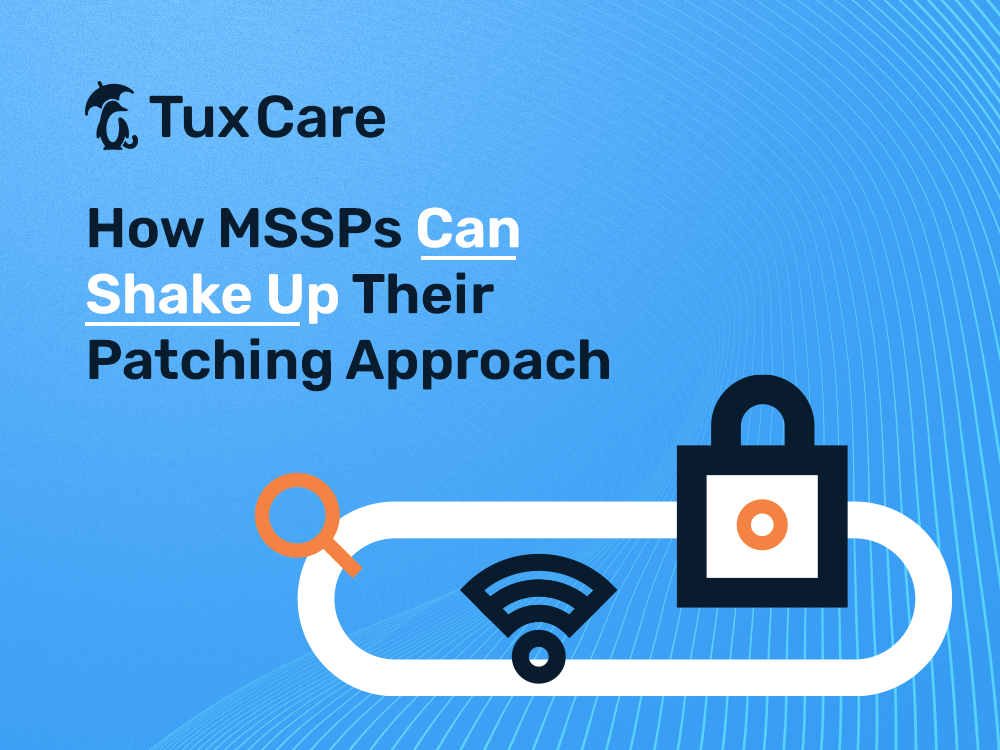How MSSPs Can Shake Up Their Patching Approach
To meet organizational requirements, compliance mandates, and regulatory requirements, Managed Security Service Providers (MSSPs) have a vulnerability patching approach available to them that they may not have considered – and it’s called live patching.
Live patching is a method of deploying Linux CVE patches without needing to reboot systems or schedule maintenance windows, and it works by applying each patch to a running Linux kernel – enabling organizations to minimize downtime while still receiving the latest security updates.
This blog post will discuss how MSSPs can take advantage of live patching solutions and how this type of approach fits into their business model.
Why Do Companies Hire MSSPs?
MSSPs offer services in information technology to small and enterprise customers to augment their compliance and SecOps teams. These service providers design, manage, and provide 24/7 support year-round to protect the customer’s computer network, host, and endpoints from intrusions.
In helping prevent cyber attacks, these providers assist clients in lowering operational risk management composite scores. They also assist with developing, monitoring, and maintaining the organization’s compliance program.
Here are some of the benefits provided by MSSPs to their clients in relation to their overall IT posture:
- MSSP monitoring systems ensure that security devices and systems function optimally to prevent the attack surface from being penetrated by internal and external threats.
- MSSPs deploy and monitor security software, live patch systems, and analyze security events and reporting.
Many small-to-medium-sized businesses do not own their data centers. Most organizations rely on cloud-based hosted applications, SaaS applications, and managed security services to monitor their systems. MSSPs help these organizations protect against cyber attacks and compliance mandates through various patching offerings.
Multi-tenancy Live Patching Architecture
MSSPs design their multi-tenant offerings to be cost effective, secure, and resistant to their customers. Multi-tenant live patching has three separate design offerings:
- Dedicated
- Isolated
- Shared
Each of these offerings presents cost and security protection options for their clients:
- A dedicated hosting option is a single-tenant instance for one specific client with highly secure protection to meet compliance requirements.
- Isolation tenancy is a cost-effective yet highly secure option leveraging a complete separation between the data and control planes within the multi-tier design. The MSSP will enable a shared services tier or control plane to support various clients. However, the data plane is in complete isolation for each client.
- A shared tenancy is a low-cost option with a shared control plane and a shared data plane model. This deployment option is standard for clients leveraging the MSSP for non-production or non-compliance-mandated data protection requirements.
The dedicated model is the most expensive for the provider and the client. The isolation model level does leverage some economy-of-scale by gaining a better gross margin while offering clients a secured instance.
Multi-tier Live Patching
So how does live patching, which is automated and rebootless vulnerability patching, fit into the MSSP picture?
With TuxCare’s live patching solution, providers can create separate instances of the TuxCare ePortal to deliver live patching to each of their clients’ systems. Each tenant will have their respective policies for live patching isolated from others and access to compliance and risk reporting.
This strategy supports client data privacy separation to meet each client’s compliance mandates. This method of deployment is often used with clients in regulated environments requiring air-gap closed-loop deployment. It’s ideal for staging and production environments that need strict isolation from external networks, or that require stricter control over the patches to be applied.
Live Patching the TuxCare Way
MSSPs and application hosting providers can leverage TuxCare to deliver a multi-tier strategy for live updates, helping them deliver the security that their clients expect with the added efficiency and flexibility that comes with a live patching solution that’s compatible with every popular Linux distribution.
TuxCare features flawless interoperability with vulnerability scans, security sensors, automation, integration with vulnerability management process, reporting tools, and our ePortal patch deployment management platform. This dedicated private patch server runs inside your firewall on-premises or in the cloud.
Plus, TuxCare is the only provider to patch security vulnerabilities in kernels, shared libraries, virtualization platforms, and open-source databases across all popular enterprise Linux distributions.
Ready to chat with a Linux patching expert to learn how adopting a live patching approach can improve your organization’s operational efficiency?



 Documentation
Documentation Login
Login



